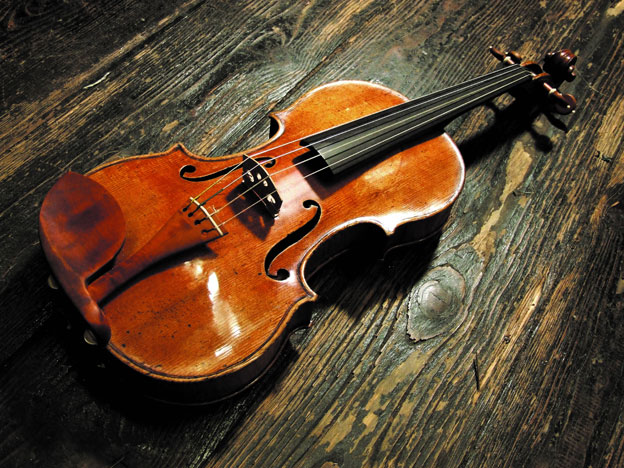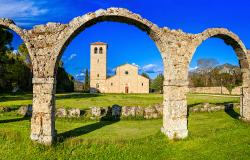Antonio Stradivari (1644-1737) was a luthier and crafter of string instruments, violins, cellos, guitars, violas and harps - one of the greatest artisans in the field. More than a thousand Stradivarius instruments were created and about 650 of the "Strads," as they are colloquially called, survive, mostly violins.
The unique sound of these violins has led to much research and opinion as to why this is so. Scientific American published an article by Joseph Nagyvary, a researcher who described the sound of a ‘Strad’ violin most aptly:
“It flickers, constantly trembles, it moves like candlelight.”
The violin was originally designed to imitate the human voice and used for ballet and dance music. It became the most prized instrument for orchestra and melody.
Information as to Antonio’s early years is scanty, but it was presumed he was a student of Nicolò Amati, in Cremona. Antonio’s ancestry goes back to 12th century Cremona, and Cremona has been the capital of violin makers since the 16th century.
It is recorded that he was married twice. First to Francesca Feraboschi with whom he had 5 children. Two of his sons, Omobono and Francesco, became violin makers. After her death he married again, in 1699, to Zambelli Costa with whom he had another 5 children. He moved to what is now Piazza Roma 1, in the street where other violin-maker families such as the Amati’s and Guarneri’s were living.

Antonio develops his own style
His first labels were in 1660-1665 and, though the violins construction was influenced by Amati, he soon developed his own style which was more masculine than Amati’s. His carved heads showed what an incredibly skilled craftsman he was .The Stradivari violins became a rage through Europe. The brand name became important and it was said that his secret formula for the varnish gave his violins their unique sound.
He experimented with the shape and design of the violins and, in the 1690s, the Long Strads with larger pattern and darker, richer varnish began to emerge. Around 1686 to 1694 they were flatter in form and the sound holes reclined more. There were ornate violins such as the collection made for the Spanish court in 1687, inlaid with ivory and with scrollwork round the sides. In 1688, Stradivari began outlining the heads in black, one of the famous features of a Stradivarius violin from that period. He undertook commissions from Nobles, Dukes and even the Prince of Tuscany (the “Tuscan” Strad). Stradivari was famous in his own lifetime. Violins were considered fashionable and when later virtuoso violinist Niccolò Paganini played a Stradivarius, he was treated like the equivalent of one of today’s rock stars!

The long and the short of it
Some of the earlier violins are referred to as “Amatise” and the later ones as “Long Strads” or “Grand Pattern.” They are all better known by their interesting names which they have acquired due to the fame of the owner or family to whom they belonged, and also by their appearance and sound.
In 1698 Antonio began making a slightly shorter model and, between the years 1700-1720, which is considered his “Golden period,” the violins had higher quality curves and beautiful rich varnish, gracefulness and variation.
It is considered that from 1720 to his death the violins are less beautiful but still retain a fine tone. There is no doubt that Antonio Stradivari made some of the greatest improvements to the instrument during the 16th century.
The Strads, their character, their owners, their value
The violins themselves are like characters, each unique, each having a name and a history, each with its own beauty. Names like “Sleeping Beauty,” “Firebird,” “Lincoln,” “Spanish,” “Emperor,” and “Leonardo da Vinci” contain the story of each instrument and hint at its essence.
The “Davidoff” Stradivarius cello is owned by the famous YoYo Ma, the “Barjansky” Strad belongs to Julian Lloyd Webber and “Soil” to Itzhak Perlman. The “Dolphin” is in the Nippon Music Foundation. The “Mendelssohn” sold in 1990 for £902,000, the “Kreutzer” sold in 1998 for £947,500. “Lady Tennant” sold for an enormous $2 million in 2005 through Christies Auction House and “The Lady Blunt” (dated 1721) raised $15.9 million for the Japan Earthquake fund in 2011. The well-known “Molitor” was bought by Anne Akiko Meyers in 2010 at the Tarisio Auctions for $3.6 million, the “Hammer” (1707) sold in 2006 for $3.5 million and in 2012 the “Baron van der Leyen” Stradivarius sold at the Tarisio auction for $2.6 million. It is not surprising then that because of the great value attached to the violins there are many forged “Strads” and these instruments should always be authenticated.
Museums and orchestras own and house many of the violins and violas. Not all the violins are in use. The Vienna Philharmonic Orchestra has several and they are in use. The Library of Congress, the Royal Palace of Madrid, the Royal Academy of Music and the Musée de la Musique, Paris, the Metropolitan Museum of Art, the National Music Museum, South Dakota, all have instruments safely kept in good condition. The “Messiah” Stradivarius is not played and is housed at the Ashmolean Museum in Oxford, England.

A dedicated sixty years
Antonio Stradivarius was indeed a master of his trade and over sixty years he produced these fine instruments, a great number of Italian treasures.
The last recorded violin was in 1737. Antonio died in 1737 at age 93 and was buried in the Church of San Domenico, Cremona.
Both Stradivari and Guarneri instruments are considered supreme today and judging by the value placed on them by society, craftsmanship is held as a supreme treasure. It gives new meaning to the old saying ‘for the price of a song ‘when it is played on a Stradivarius! George Eliot, the poet, captured the sentiment of perfection in the poem “Stradivarius” (1873):
"When any master holds twixt chin and hand a violin of mine,
he will be glad that Stradivarius lived,
made violins and made them of the best’’.











